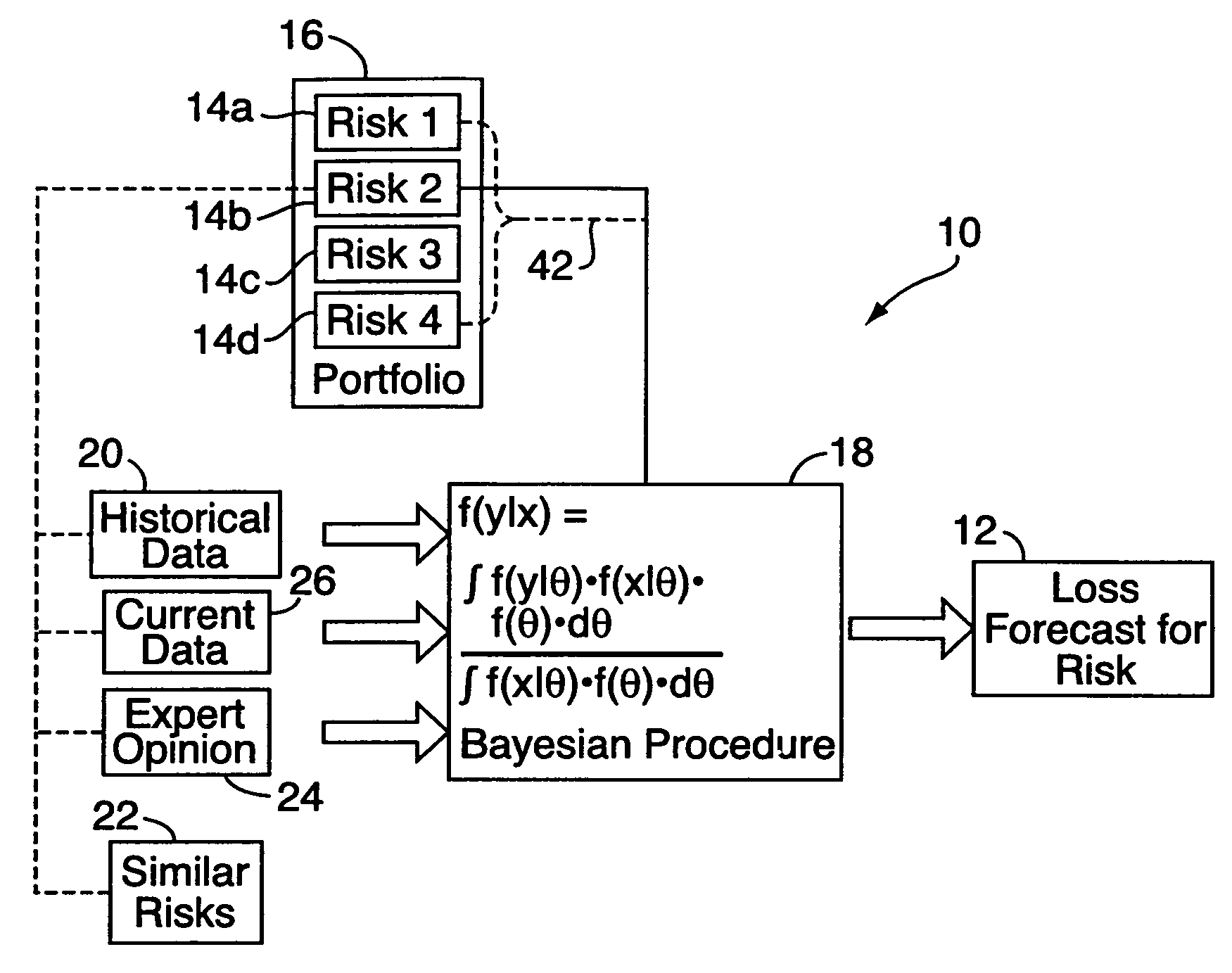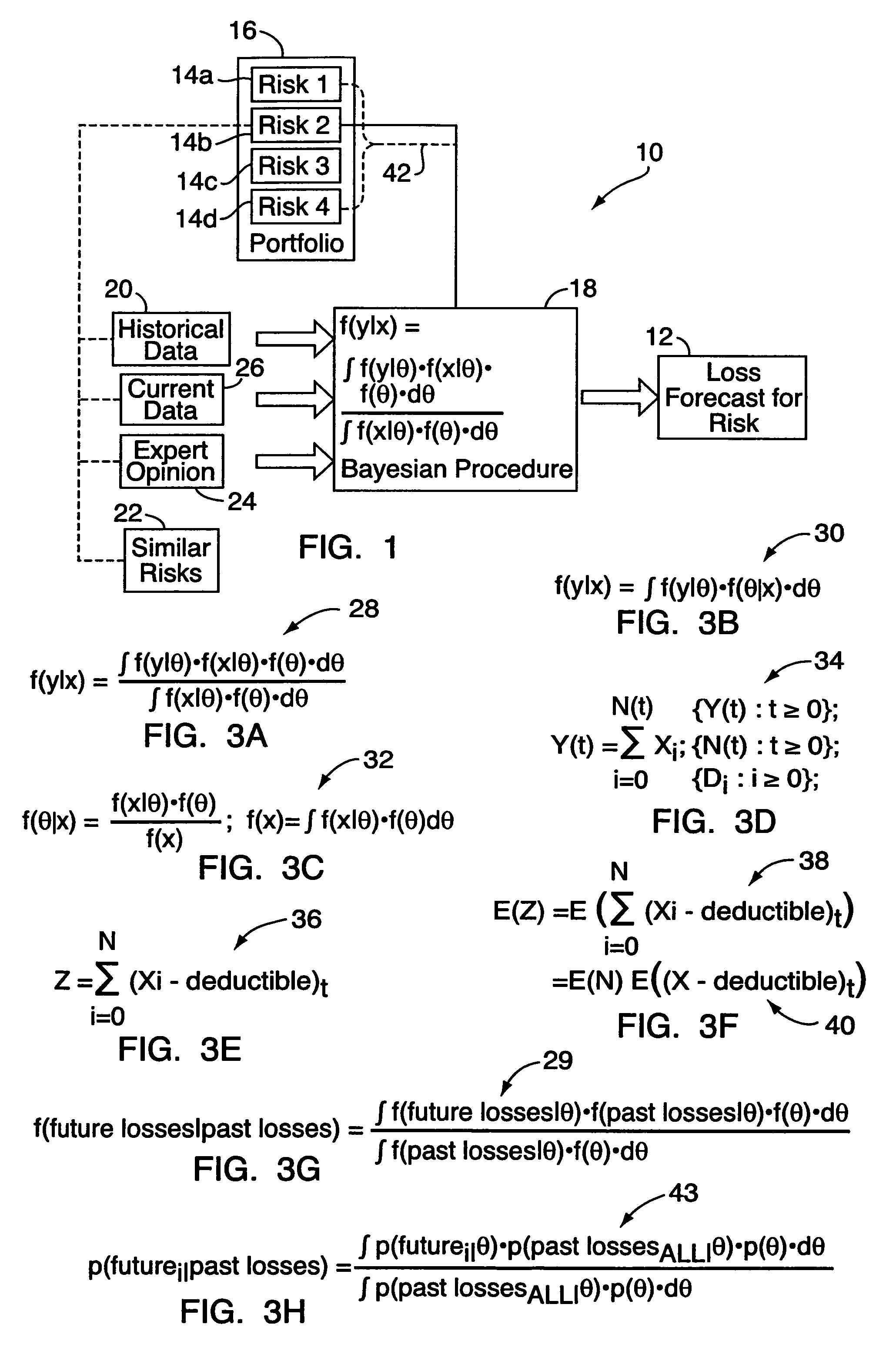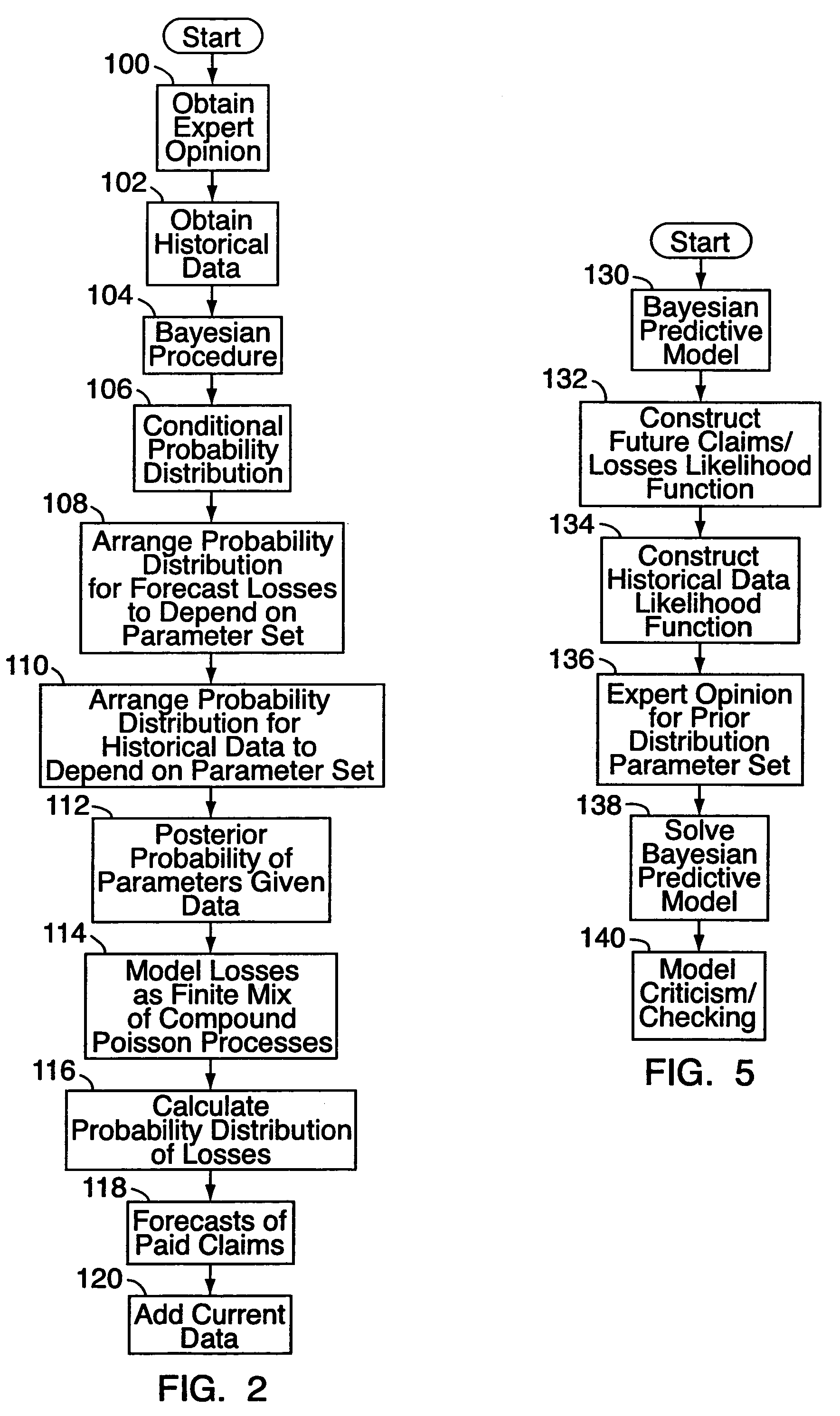Method of risk modeling by estimating frequencies of loss and loss distributions for individual risks in a portfolio
a risk modeling and risk distribution technology, applied in the field of data processing, can solve the problems of ineffectiveness in situations with less on-hand data, inaccurate data curves generated with such methods, and inability to effectively assess individual risks using such methods, and achieve the effect of increasing accuracy
- Summary
- Abstract
- Description
- Claims
- Application Information
AI Technical Summary
Benefits of technology
Problems solved by technology
Method used
Image
Examples
Embodiment Construction
[0016]With reference to FIGS. 1-5, an embodiment of the present invention relates to a method or system 10 of predictive modeling for generating a forecast of expected loss 12 for individual risks 14a, 14b, 14c, 14d, etc. in an insurance portfolio 16. Typically, this will be done for insurance-related purposes, for determining premium levels and the like. By “individual risk,” as noted above, it is meant a single insured or insurable property such as a building, item of equipment, vehicle, company / business, person, operation / manufacturing line, or parcel of land. (The method is also applicable to individual risks grouped together.) For generating the loss forecast 12, the method uses a Bayesian procedure 18 that incorporates historical data 20 relating to the individual risk 14b in question. The historical data 20 will typically comprise information somehow relevant or related to the risk, and may include any of the following: recorded losses for the risk, with date, amount and type...
PUM
 Login to View More
Login to View More Abstract
Description
Claims
Application Information
 Login to View More
Login to View More - R&D
- Intellectual Property
- Life Sciences
- Materials
- Tech Scout
- Unparalleled Data Quality
- Higher Quality Content
- 60% Fewer Hallucinations
Browse by: Latest US Patents, China's latest patents, Technical Efficacy Thesaurus, Application Domain, Technology Topic, Popular Technical Reports.
© 2025 PatSnap. All rights reserved.Legal|Privacy policy|Modern Slavery Act Transparency Statement|Sitemap|About US| Contact US: help@patsnap.com



